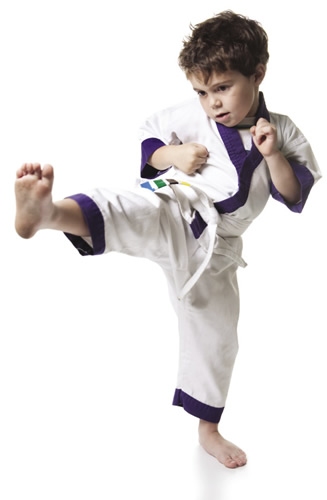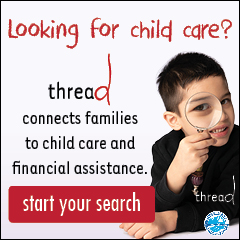
Karate Kids
Martial Arts Benefits for Kids Under 6
Story by Jamey Bradbury
Getting your kids involved in sports early is a great way to help them develop balance and coordination, and will establish an early understanding of the importance of exercise. Looking for an activity that will offer your preschooler, kindergartener or first-grader benefits beyond the body? Consider karate, kung fu or another martial art.
Brain and Body Bonuses
“Parents want to know if their kids will be more coordinated, and I guarantee they will be,” says Sensei Katsutaka Tanaka of Tanaka’s Martial Arts Academy in Anchorage. “But real coordination is about the brain and body communicating correctly and in a balanced way.” According to Tanaka, the emphasis karate, tae kwon do and kung fu place on the control of both body and mind helps children under the age of 6 learn calmness and discipline.
Martial arts classes also provide an environment that fosters consistency, says Shihan Logan Thornton, chief instructor at the Alaska Center for the Martial Arts in Wasilla. “In the martial arts classroom, the limits are very clearly defined,” he describes. “Because of that, not only do kids learn about being fit and how to deal with challenges, but they learn a lot about what is and isn’t acceptable.”
Martial arts is also an especially good fit for the developing bodies of kids as young as 4, says Laura Peterson M.D. with Ptarmigan Pediatrics in Wasilla, whose own children have been practicing tang soo do, a form of karate, for over a year.
“With the increasing prevalence of childhood obesity, kids need to have a good workout,” she says. “They learn flexibility and balance in martial arts, but it doesn’t put too much stress on their growing bones and muscles” the way weight lifting or gymnastics might.
Something for Everyone
“Every kid can benefit from learning martial arts,” says Thornton, “but some will benefit in different ways.”
Studies have demonstrated that children with ADD/ADHD and autism spectrum disorders show improvement in their ability to focus, engage in less fighting and develop stronger social skills when they take part in martial arts.
“For special needs kids, the repetition in martial arts classes is a benefit,” explains Dr. Peterson, “as is the opportunity to model the behavior of other children.”
Much of what the students learn depends on the teacher, adds Thornton. The best instructors will tailor lessons to the students’ needs. “If you have a shy kid, you put more emphasis on building confidence.”
While it may seem contradictory to enroll a child who displays bullying behavior in a karate class, Thornton says that learning martial arts might be exactly what a violence-prone child needs: “In this class, they’re not learning to be violent; they’re learning about violence – that it’s okay to learn how to punch and kick, but that it’s not okay to do it on people.”
Right Time, Right Place
While there are classes designed for children as young as age 2, Tanaka recommends waiting until a student is 3 or 4 before enrolling her. “That’s when they start forming their character, and when they can start learning concentration.”
So what’s taught in a karate class for 4-year-olds? “We run a complete program that addresses the needs for that age group, which are different from the kids who are older and doing sports,” Shihan Thornton says of his academy. There, his 4-, 5- and 6-year-old students work on basic kicks and punches, the difference between left and right, coordination and following instructions. They also talk about stranger safety, personal space and setting boundaries.
Not all martial arts classes are equal, though, says Thornton. He suggests that parents visit a class before enrolling their children. “Phone calls and websites never give you the whole story, so go to the class, meet the instructor, and see how the school is run.”
He says that a patient instructor who’s focused on teaching young kids, a small student-to-teacher ratio and a clean, positive environment are ideal for a successful martial arts class. Once you’ve found the right fit, your kids can start punching and kicking their way to a healthier body and mind.










